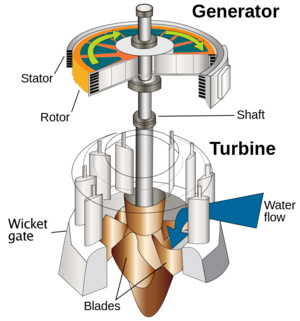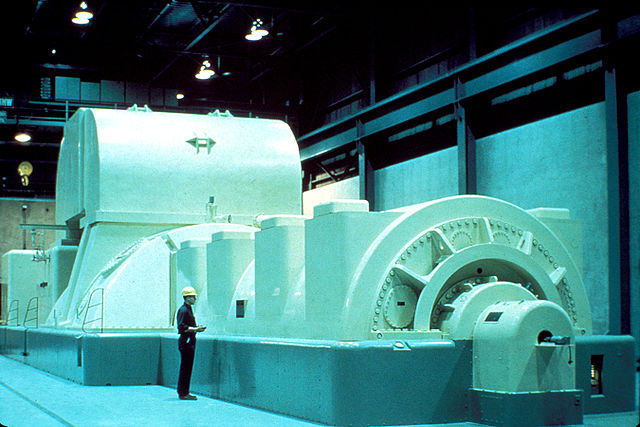Electric generator

Electric generators are used to transform mechanical or kinetic energy into electric potential difference, also known as voltage. There are several power generation applications that require the use of electric generators. The first electric generators created direct current (DC), but later were replaced with the cheaper, more efficient alternating current. Almost all power plants use (AC) generators; the exception is photovoltaic cells.
Electric generators get their kinetic energy from a fuel (like natural gas) or a primary energy flow (like hydropower or wind). One particular kind of generator that runs off of diesel is the diesel generator; these are often useful in remote areas like Canada's far North, for the Yukon power grid.
Figure 1 shows how a fluid would turn a shaft which in then turns the electric generator. Figure 2 shows an actual electric generator, attached to a turbine.

For Further Reading
For further information please see the related pages below:
References
- ↑ By U.S. Army Corps of Engineers, This file was derived from: Water turbine (en).svg:, Public Domain, https://commons.wikimedia.org/w/index.php?curid=18581340
- ↑ Wikimedia Commons [Online], Available: https://upload.wikimedia.org/wikipedia/commons/4/4f/Modern_Steam_Turbine_Generator.jpg

